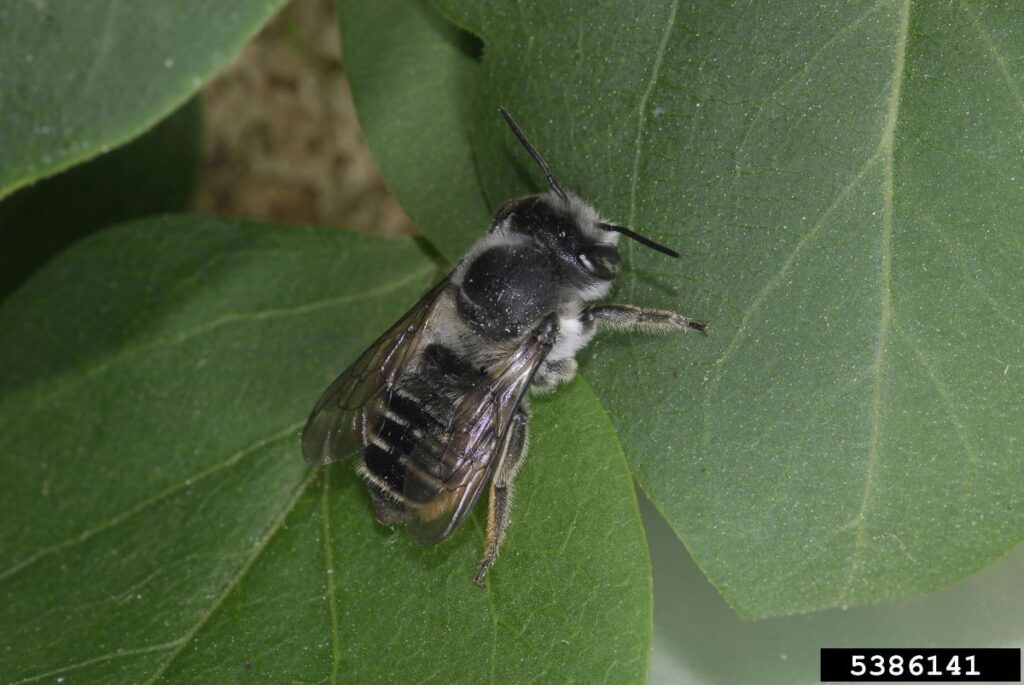If you have noticed small, neatly cut, circular pieces of flower or leaf tissue missing from your ornamental plants, they have been visited by a leaf-cutting bee.
These insects are seldom seen, but evidence of their presence is very distinct. The characteristic, circular cuts are often seen on rose leaves, but the bees seem to be fond of redbud leaves, too. Small plants may be nearly defoliated by the bee’s cutting activity.

Leaf-cutting bees are solitary, small to medium, stout-bodied, and generally dark in color. They are found throughout the U.S. with over 650 species in North America. Their bodies are often very hairy and comparable in size to honeybees.
In addition to cutting leaves, the bees collect pollen that serves as food for their young. Unlike honeybees that carry pollen on their hind legs, leaf-cutting bees carry pollen on the underside of their abdomen.
Leaf-cutting bees make tunnel-shaped nests in various places such as rotten wood, cavities in solid wood, occasionally in the ground, or in other protected places. Female leaf-cutting bees bring disks cut from leaves or flowers to their tunnel or nest where they lay eggs.
Here pollen will be placed on some disks to serve as food for the young (larvae). Other leaf or flower disks are used to line the tunnel and finally seal the tunnel opening. A tunnel may contain several cells where the larvae develop.
Impact
Leaf-cutting bees seldom cause any serious or permanent damage to plants; however, they can be a nuisance when they damage flower petals of ornamental plants. Control is not recommended for these important pollinators.